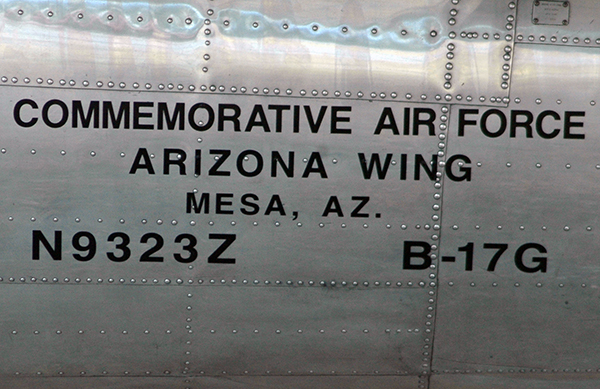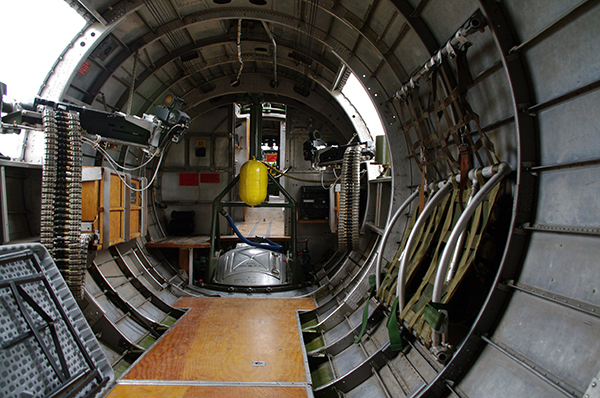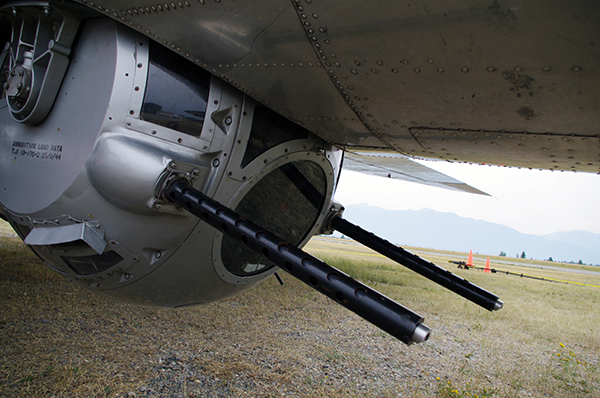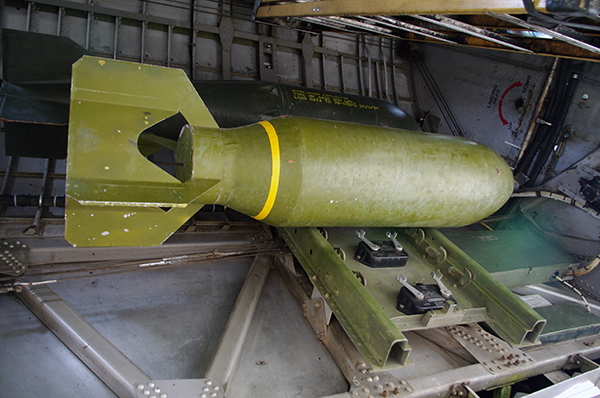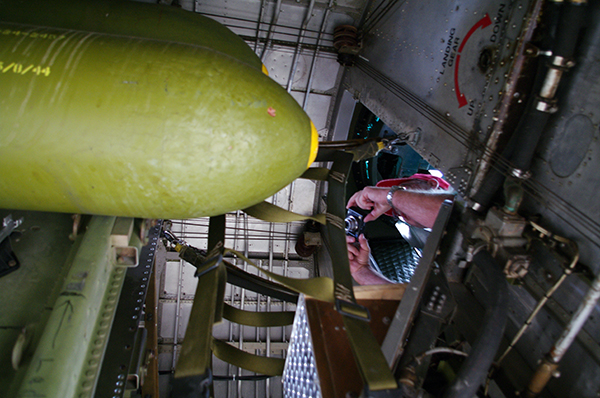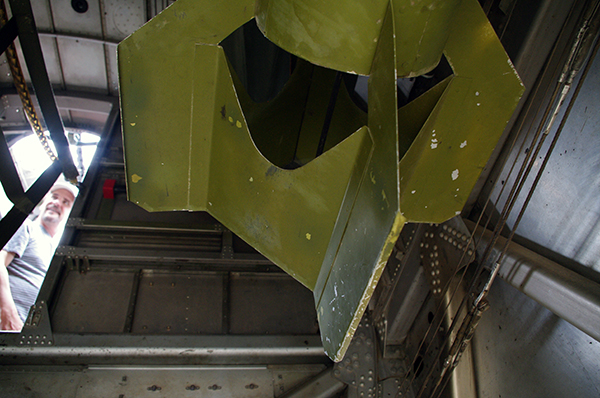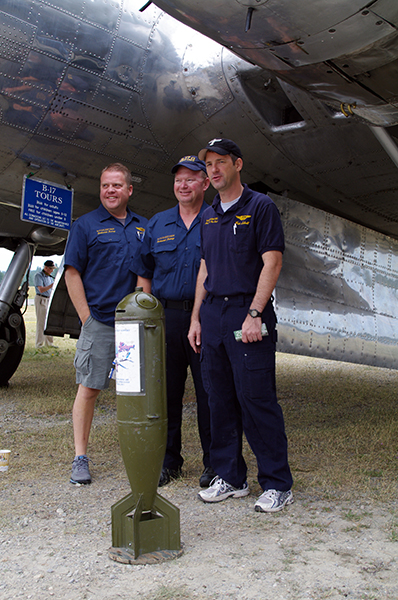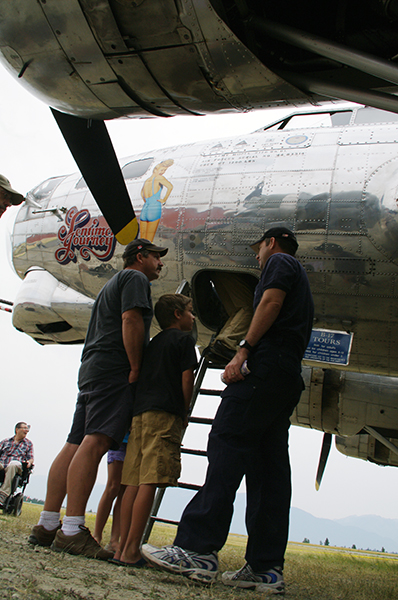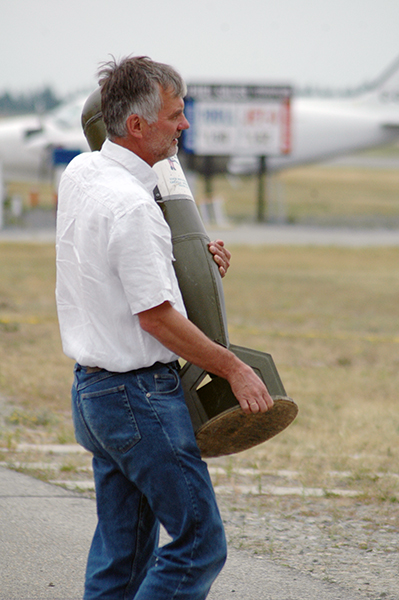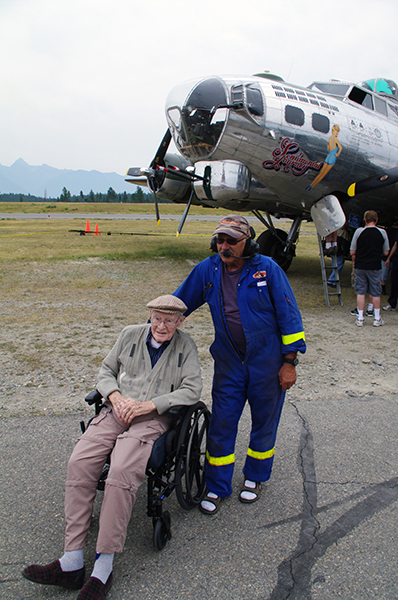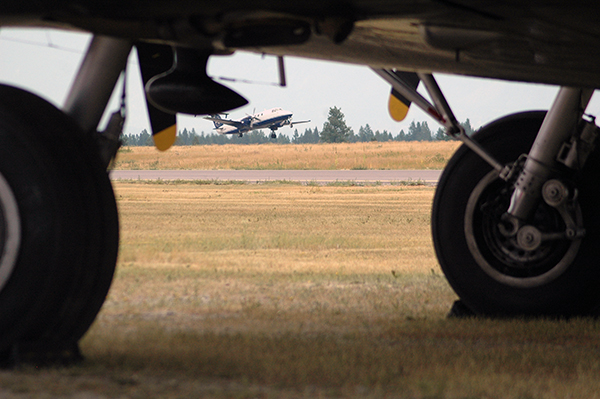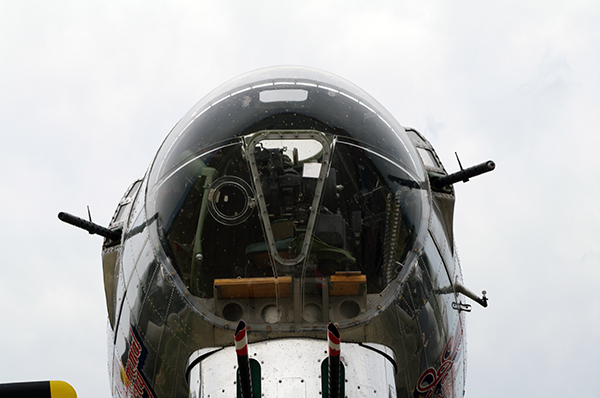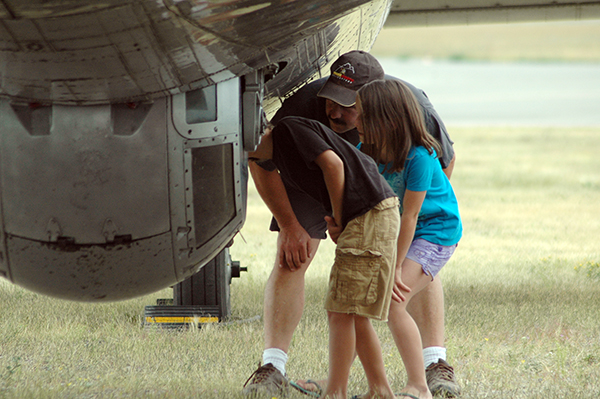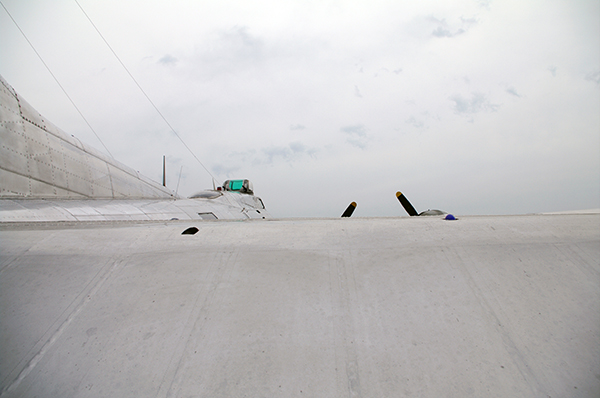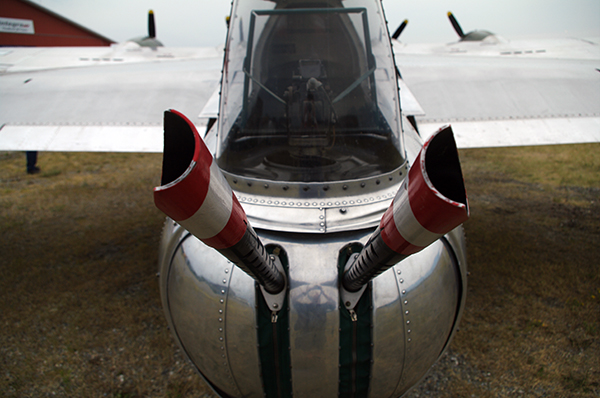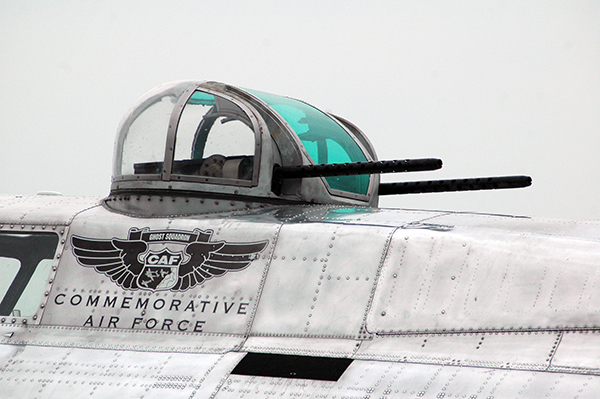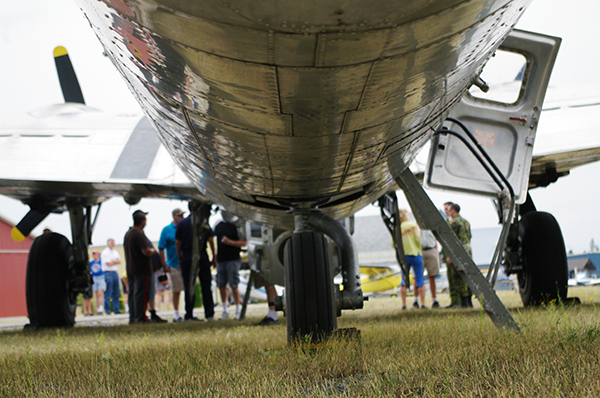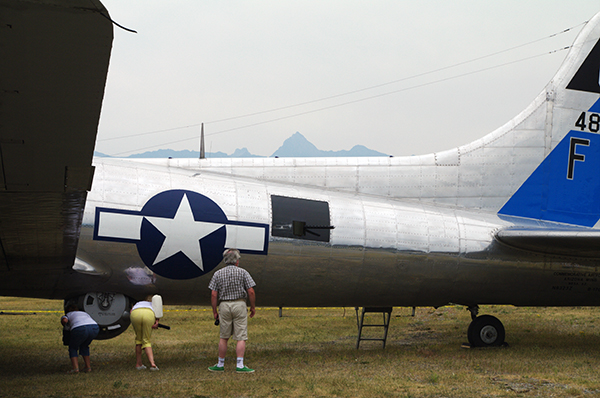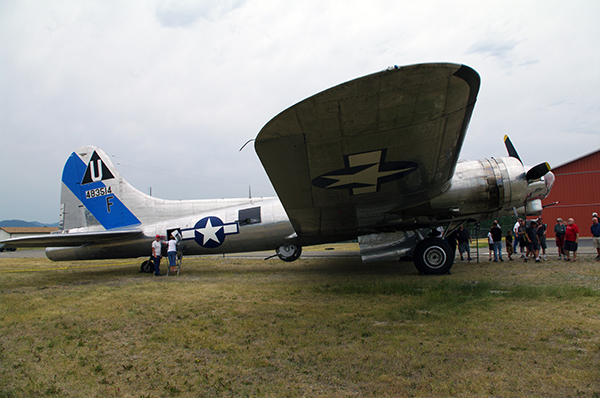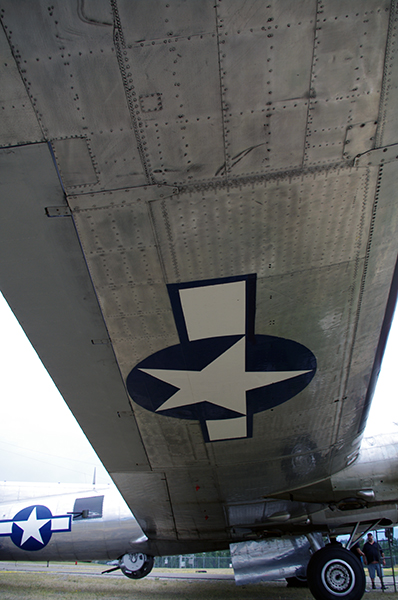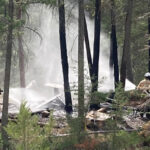Home »
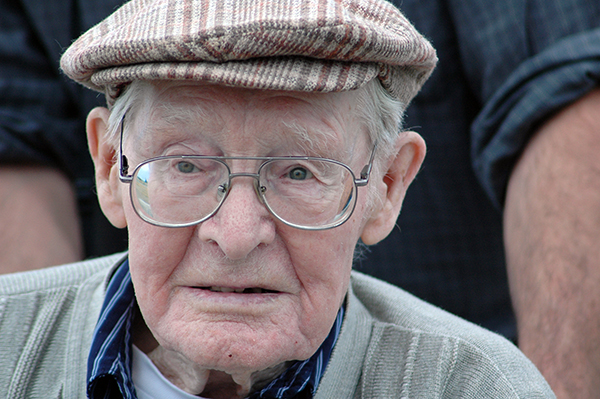
Flying Fortress offered glimpse back to WW2
Howard Hollands’ eyes, glassy from reminiscence and age, stared at the B-17 Flying Fortress parked on the field adjacent to hangars at the Canadian Rockies International Airport.
The Joseph Creek Care Home resident (pictured at top August 21) shared with those who would bend to listen to the wheelchair-bound Royal Canadian Air Force (RCAF) veteran his take on seeing a B-17 up-close again. Howard was an airplane mechanic during the Second World War and he remembered patching up and repairing B-17s shot to pieces after bombing raids over Nazi-held Europe.
Howard was one of many people who stopped by to check out the B-17 while it was in Cranbrook August 20-23, as part of a summer tour across North America. The B-17 (Sentimental Journey), is part of the Commemorative Air Force (CAF) Arizona Wing, based out of Mesa.
Initiated in the 1930s, the Boeing-built Flying Fortress was used extensively by the United States Army Air Force (USAAF) during the Allies’ strategic bombing campaigns of Germany and German-held industrial and military targets. Used primarily in daytime bombing raids, the B-17 became legendary as a plane that could take a beating but keep on flying – pretty much a hard and fast must for daytime bombing raids, which faced a plethora of lethal challenges.
Click on an image to enlarge and to begin self-directed slide show. Story continues after photo display.
The British Royal Air Force, as well as the RCAF, employed the B-17 to great effect in Europe. The bombers also saw considerable action in the Pacific Theatre against the Imperial Japanese war machine, where Sentimental Journey saw service.
The heavy bombers carried up to 6,000 pounds of bombs and as its name suggests, it was a formidable target for German and Japanese fighters, despite their far superior speed and maneuverability. The Flying Fortress featured at its height of usage 13 machine guns, mounted on top centre, along each side and chilling to consider for the gunner – in the tail, belly and nose.
More than 12,800 B-17s were constructed before and during the Second World War and fewer than 15 are currently airworthy around the world.
Part of the CAF’s Flying Fortress tour is the Warbird Rides, providing for people to take a spin in the classic aircraft. Seats aboard the Sentimental Journey, for a ride from Cranbrook to Calgary, cost between $720 and $360, with guests sitting in such locations as the radio room, the glass nose and waist gunner seats. Riders were returned to Cranbrook by bus.
Access to see the B-17 was free, but proceeds from the rides go to the CAF Arizona Wing Aviation Museum to enable it to continue preserving classic military aircraft.
The CAF has members in every state and 28 countries, including Canada. Additionally, there are units in 27 states and four nations that operate and preserve classic military aircraft.
“The CAF was founded to acquire, restore and preserve in flying condition a complete collection of combat aircraft which were flown by all military services of the United States, and selected aircraft of other nations, for the education and enjoyment of present and future generations of Americans,” explains https://www.commemorativeairforce.org/ .
“More than just a collection of airworthy warplanes from the past, the CAF’s fleet of historic aircraft, known as the CAF Ghost Squadron, recreate, remind and reinforce the lessons learned from the defining moments in American military aviation history.”
For more on the Sentimental Journey go to: https://www.azcaf.org/pages/sentjourn.html or to: https://en.wikipedia.org/wiki/Sentimental_Journey_(aircraft) .
For more on the CAF, Arizona Wing: https://www.azcaf.org/
Ian Cobb/e-KNOW

